Are you considering buying barrier arms to add another level of security to your commercial or residential property? If so, you may have questions about how they work and their benefits.
Gate arms are an ideal solution for areas with high traffic and high visitor access, as they can control access and regulate the flow. However, it is worth noting that this investment also comes with installation costs. This article will describe the advantages of barrier arms, the different types available, and what to consider before buying; It gives you all the information you need to make informed decisions and get the most out of your security system.
1. What is a barrier arm?
Barrier arms are an efficient security solution for properties with limited access. The device consists of a pole or “arm” that extends across the width of any gate or entrance to control the flow of traffic in and out.
Barrier arms are a common security device found in parking lots, apartment buildings, office buildings, and other restricted areas. These systems have many advantages over other types of safety devices; They are user-friendly, require minimal maintenance, and can be easily integrated into existing systems.
In addition to this, they are highly noticeable and an effective deterrent to any potential thieves or intruders, which makes them particularly useful for parking lots that rely heavily on the revenue generated from controlling the number of vehicles entering the garage.
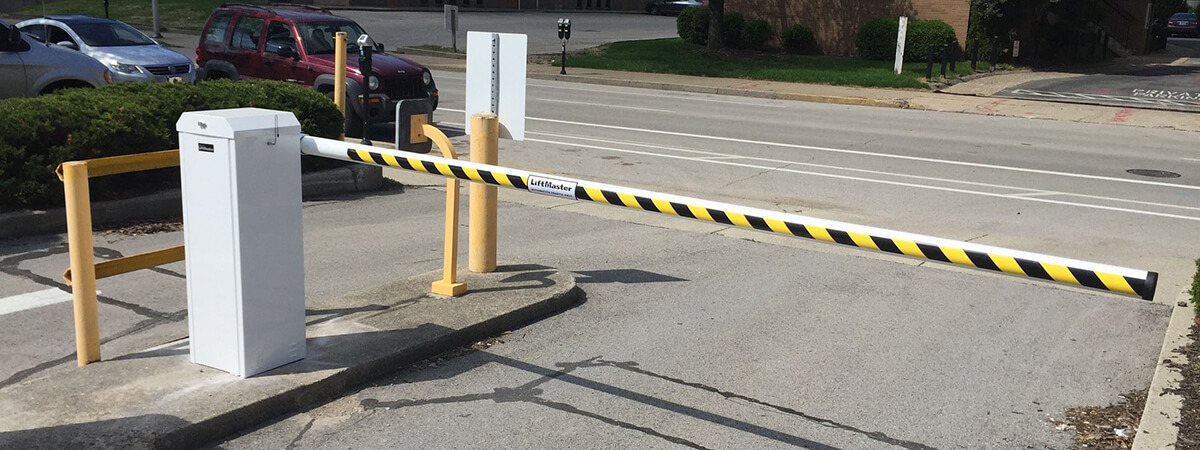
2. What are the types of barrier arms?
The following is a detailed introduction to two aspects of automatic parking barriers and manual parking barriers:
1) Automatic barrier arms
The automatic barrier arms are carefully designed to open and close without any manual input other than a power supply or occasional interaction.
These arms have an automatic shutdown mechanism, obstacle sensors, and wireless remote access for added convenience, and are also equipped with multiple safety mechanisms such as an emergency stop button, an emergency manual release lever, and a timer (the arm automatically shuts off if left) for too long.
Advantages of automatic barrier arms :
For greater control over your security system, features such as RFID readers and automated ticketing systems can be installed – allowing you to customize them to meet your specific needs and property requirements.
Since there is no need for human intervention, automatic arms can increase efficiency, which makes them especially valuable in high-traffic areas where cars are constantly flowing.
This eliminates the need for physical labor (or at least minimizes it), thereby drastically reducing the costs associated with protecting property.
When you consider buying an automatic barrier arms, you need to consider:
- Technology: As with any product, you need to be familiar with the various technologies available. Be sure to research the features and functions of the different models available and their compatibility with existing safety systems.
- Power Supply: Does your facility have enough power to run the arm on its own? If not, you may need to look into other power supplies or models with lower voltage requirements.
- Installation and maintenance: Be sure to consider the cost of the mounting arm and any associated costs, such as the cost of servicing or replacing any parts. You may need to hire an expert for installation, which can cost anywhere from $1,000 to $12,000.
2) Manual fence arm
Manual barrier arms are usually operated by guards or other personnel and require manual intervention to open and close the barrier arms.
Advantages of manual barrier arms :
Although remote control is now common, these manual barriers are often more cost-effective than automated versions and are easy to use with minimal training.
Manual arms are particularly suitable for areas with low foot traffic because they have a locking mechanism that prevents unauthorized persons from opening them, while still providing an additional layer of security without the need to automate the system.
If you want to buy a manual barrier arms, you need to consider:
- Length and height: Choose a size that meets your dimensional requirements and accommodates the vehicle you will be passing.
- Materials: Keep in mind that depending on the model you choose, you may need to operate the arm. Consider the installation environment of the barrier arms and choose the material that best suits your needs and budget.
- Installation and maintenance: As with automatic arms, installation and maintenance costs should be considered. The installation cost of manual barrier arms is slightly cheaper than that of automatic barrier arms, but the cost of hiring a professional is still considerable.
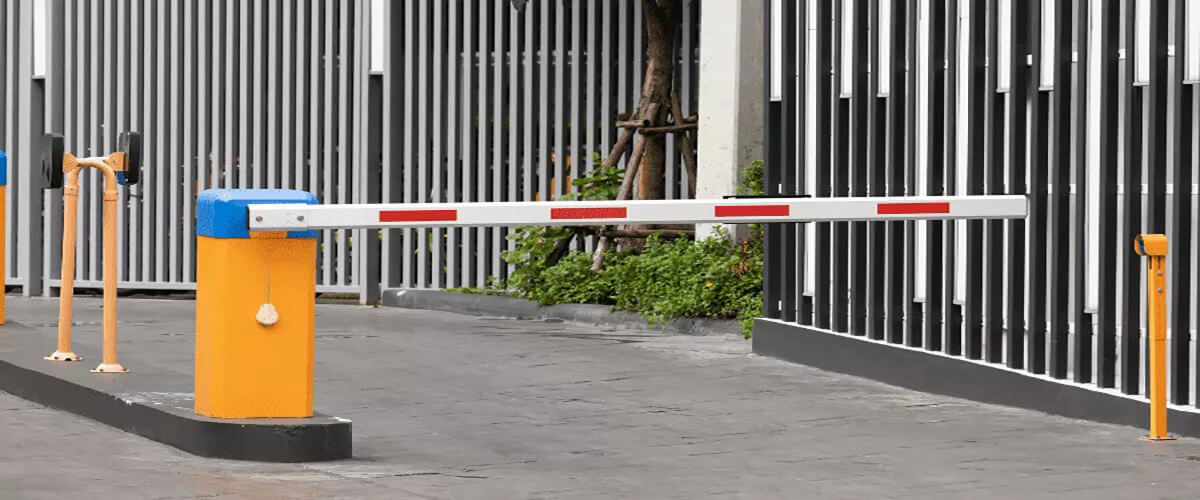
3. What is the function of barrier arms?
Understanding the function of barrier arms is crucial because they are mechanical devices driven by electric motors or hydraulic systems. They can be raised and lowered by levers, and the speed can be adjusted according to the flow of traffic.
Most have safety features that prevent them from approaching any object in their path, making them a reliable form of safety.
Automatic arms are powered by an electric motor or hydraulic system and are more common than manual arms. They can be programmed to automatically turn on and off at certain times of the day or in response to certain events.
Manual arms rely on a person to manually push them up or down, which makes them less expensive to install but more difficult to operate than automatic arms. They are best suited for areas with low traffic or where access to the property needs to be tightly controlled.
Barrier arms are an effective way to stop tailgating when one vehicle tries to follow another into an unauthorized entry. Most drivers are put off by the damage that can be done by dropping their arm onto the hood of the car; However, some people may still try to breach security in this way.
To prevent this, many cars are equipped with sensors that can detect when two cars are trying to enter at the same time. In this case, the arm automatically lowers and stops the second vehicle – ensuring that unauthorized vehicles cannot enter the property.
This is especially important in residential areas – it is often used in HOAs (homeowners associations) or gated communities to keep them safe and safe from intruders. These security systems are often integrated with existing access control systems, such as RFID access control, and barrier arms are equipped with walkie-talkies for visitors to request access.
For residents and/or regulars, RFID (radio frequency identification) systems are usually installed with barrier arms. The system uses a small transponder chip placed in the windshield of each vehicle to detect when the car is approaching and automatically open the barrier arms or take manual control if necessary.
Commercial areas may choose to monetize the entry system, requiring each driver to either show identification or pay to enter; Many of these systems are equipped with cameras so that guards can monitor who enters and quickly fix any problems.
For parking lots, barrier arms are crucial to accurately charging vehicles and preventing loss of revenue – up to $50 per vehicle – due to vehicles slipping without paying to enter.
Without proper security measures, a business’s revenue will drop significantly; The barrier arms can detect and block multiple vehicles from passing, thus providing an effective deterrent.

4. The benefits of barrier arms
barrier arms offer the best solution for safety, traffic management, and the prevention of tailgating. Here are a few advantages that make it a better option than other security measures:
- Low maintenance costs: Unlike most other security systems, they require very little maintenance. These arms are easy to operate and can be installed in just a few minutes.
- Adaptable: They are a good choice for businesses that need to control traffic and access but also need to quickly adapt to changes in traffic or access requirements.
- Visibility: They are very visible and can act as a deterrent to potential intruders.
- Integration: barrier arms can be easily integrated into existing safety systems to provide an additional layer of protection.
- User friendly: Relatively easy to operate, no intensive training required.
- Automated operation: The automated arm can be operated remotely or with a button or card. This makes them ideal for properties that require quick access control.
- Cost-effective: barrier arms require minimal maintenance and energy consumption, making them a cost-effective safety solution.
Barrier arms are an excellent choice for safety and traffic control applications with numerous advantages.
5. What is the price of barrier arms?
The cost of automatic or manual barrier arms can vary depending on several factors, such as the type of barrier arms, the length of the arm, the materials used, and the brand. In general, manual barrier arms are cheaper than automatic barrier arms. Basic manual barrier arms can cost from $100 to $1,000, while automatic barrier arms can cost from $1,000 to $10,000 or more.
Installation costs will also vary depending on the complexity of the installation, location, and materials used. On average, the installation cost of a barrier arms system can range from $1,000 to $5,000 or more, depending on the specific requirements and needs of the installation.
It is best to consult a professional installer or supplier to more accurately estimate the cost of a barrier arms system and its installation based on your specific needs and requirements.
6. What is the difference between a fence, a gate, and a barrier arms?
The barrier arms are a single pole that spans the opening and is raised and lowered between each vehicle that passes through the checkpoint. They can be designed to separate in the event of a crash and serve as an efficient way to manage traffic flow and quickly allow vehicles to pass.
Gates are usually made of iron and can be simple vertical or horizontal fences or elaborate decorative gates. They cover the entire opening or entrance; They are heavier and harder to operate than barrier arms, but more durable.
Fences are more permanent barriers that line the perimeter of a property – usually immovable, except for smaller temporary barriers. It is designed to keep people and animals out of the house and to demarcate different areas within the property, helping to understand the difference between fences, gates, and barrier arms before buying.
The type of security gate you need Security gates depends on the size and layout of your property and the level of security you are in is designed to achieve.
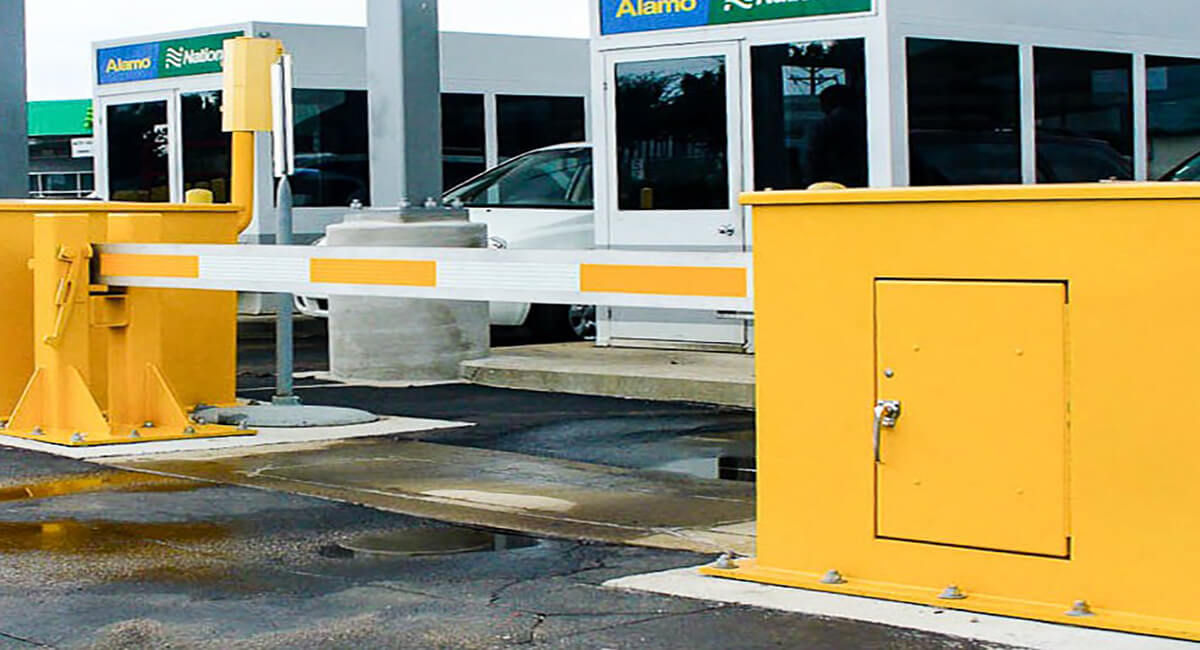
7. Factors to consider when choosing barrier arms
When choosing barrier arms for your property, certain factors must be considered.
1) How long are the barrier arms?
barrier arms come in a variety of sizes, ranging from 6 feet short to 30 feet long and 3-4 feet tall. Take the time to research which type is best for your needs.
2) What materials should you use?
When choosing barrier arms, it is important to consider the opening size and amount of clearance required for different types of vehicles. Materials commonly used in its construction include steel, aluminum, wood, and PVC.
Because of aluminum’s durability and lightweight, experts generally believe that aluminum is the best material for barrier arms.
3) What are the power requirements?
When choosing materials for a robotic arm, you should consider the budget and installation environment. Also, assess how much power can reasonably be allocated to power the arm.
Most manufacturers offer models that can be powered by electricity or hydraulic but check the power requirements (main power supply and operating voltage) before buying.
4) Installation and maintenance
Hydraulic motors can withstand greater shocks than electric motors and require little maintenance after installation, although they can fail in cold climates – so temperature controls are recommended.
Electric motors typically consume more power and are slower than hydraulic motors; However, they tend to be quieter and easier to maintain.
Whether you choose automatic or manual barrier arms for your property will further influence these factors – an automatic arm is convenient but can be costly, while a manual arm requires more effort from the user but can provide a cost-effective solution.
5) Environment
In addition, by assessing your property and its surroundings, you can better determine what is best for you.
When determining the right automatic barrier arms for your facility, consider the volume of traffic, safety needs, and available space on your property.
If there is a high volume of traffic coming in and out of your facility, an automatic gate with a shorter timer is more appropriate; For smaller entrances, choose a shorter arm.
Make sure the arm you choose is compatible with your existing security system and suitable for its installation environment.
6) Common mistakes to avoid when choosing barrier arms
With so many options, it’s easy to get overwhelmed. Unfortunately, a common mistake is not doing enough research before making a choice; Remember: Cheaper isn’t always better – the weakest part of any security system is usually its most vulnerable element.
Also, don’t forget to think ahead about your power requirements – make sure your arm will be mounted in an area where it can be easily connected to your property’s power supply. Otherwise, you risk additional labor costs for the installer to trench and pull the conduit to the power supply site.
Regular maintenance and testing are also important; If you don’t plan to repair it yourself, make sure there are professionals in the area who are familiar with your barrier arms model. After all, any security measure is only as effective as the attention it receives.
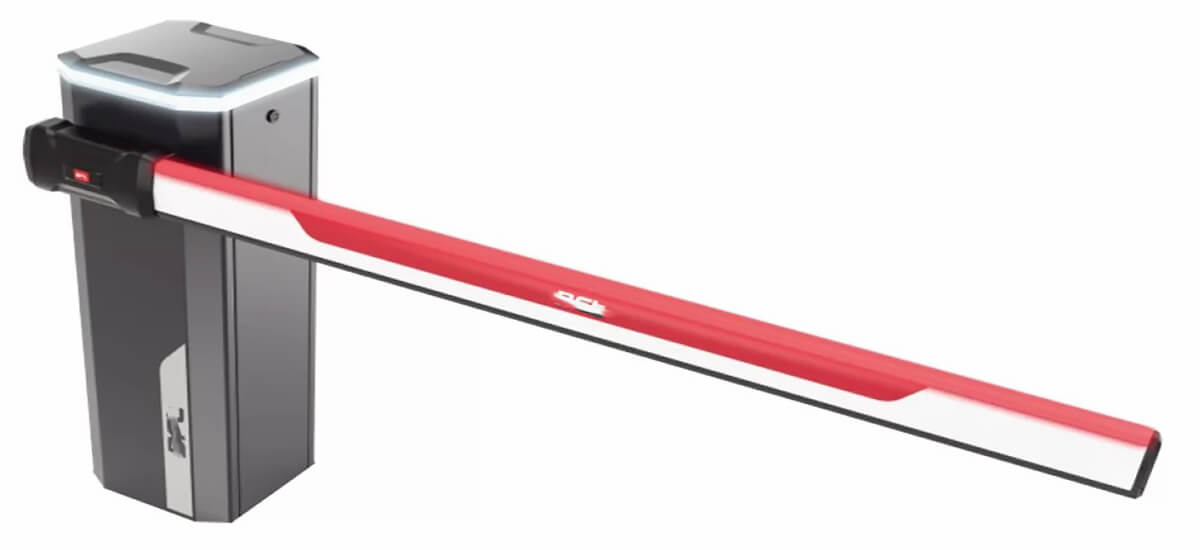
8. Installation and maintenance
Ensuring proper installation and maintenance of barrier arms is an important part of any safety system.
Professional installation is highly recommended to ensure proper use, and regular maintenance should be performed to ensure that your arm is working properly.
Regardless of a technician’s level of experience, it is important to always follow the manufacturer’s instructions when installing or operating any equipment.
Before starting the installation, you will need to select a flat area on your property that is made of concrete and does not have any cables or pipes underground; If column holes are present, digging column holes may damage them. All cables or pipes should be moved before installation begins.
After measuring and marking the area where the barrier arms will be installed, technicians will begin drilling into the foundation – digging a hole suitable for anchorage before securing it in place. Then properly install the arm’s control panel and all the necessary wiring to power it.
Once it is installed and secured in place, calibrate its springs, and sensors and test its pivot motion to ensure proper operation according to commands sent from the control panel.
For maintenance, you should coordinate with the technician (if not the technician who installed the barrier arms ) to regularly inspect and repair all components of the barrier arms: power supply and equipment. The engine; Wiring; sensor and arm itself show no signs of wear or tear.
They need to lubricate all moving parts to reduce the risk of wear, ensure that the detector and transmitter antennas are operating properly, and thoroughly clean the inner and outer surfaces of the barrier arms.
9. Tip of using barrier arms
Install barrier arm warning signs to deter any potential intruders.
Install signs that inform drivers that “the barrier arms close after each vehicle is finished.”
Ensure that all employees are familiar with the proper use and maintenance of barrier arms.
Use a reliable power supply to ensure that the barrier arms do not encounter any technical difficulties.
Always monitor the entrance to your property and watch out for any potential intruders.
Train staff and visitors on the proper use of barrier arms and any other access systems.
Use sensors and cameras to detect any attempted tailgating.
Stay up to date on any maintenance required for the barrier arms.
The barrier arms should always be kept at a safe height to reduce the risk of injury.
When choosing the ideal barrier arms for your facility, consider its specific requirements and determine the most suitable model. When you have made your decision, work with an expert to ensure proper installation and maintenance.
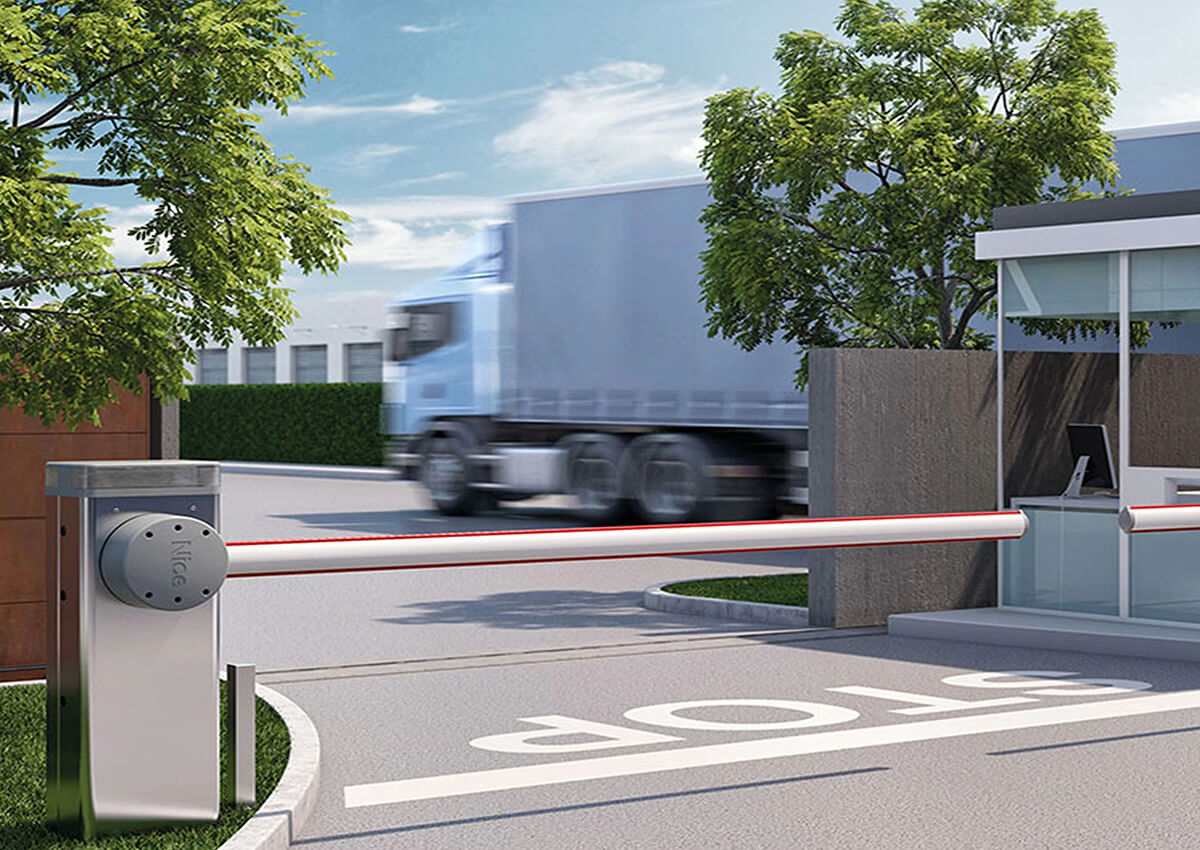
10. Conclusion
barrier arms can effectively prevent unauthorized vehicles from entering the property. The presence of these safety devices is usually enough to deter drivers from attempting to tail or sneak in; They can also be integrated with existing monitoring systems and RFID chips. There are several models to choose from, including automatic and manual arms that protect your place while controlling traffic flow.





Leave A Comment